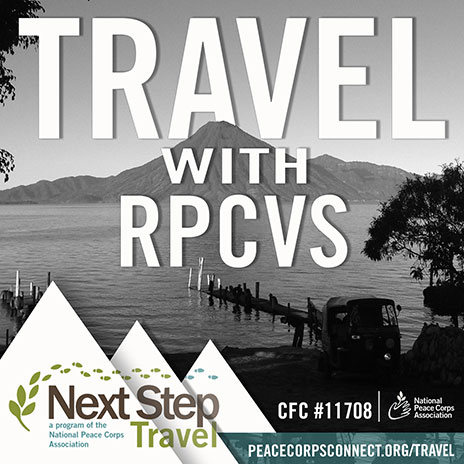Iran in 2025: An Optimist’s View
Iran offers a potential path to progress in dealing with the volatile Middle East and the threats emanating from there.
BY DAVE SCHROEDER
The writer L.P. Hartley once observed: “The past is a foreign country; they do things differently there.”
The same can be said of the future. For instance, even the most rosy-eyed U.S. policymakers in 1983 would not have suspected that the Soviet Union and Eastern Bloc would peacefully expire within a decade.
Still, the practice of foreign policy compels practitioners toward realism bordering on pessimism. As a result, acute failures in policy planning have occurred in the wake of success. Even the most cynical policymakers should plan for a range of outcomes, including success, no matter how improbable they may seem. With that in mind, the strategy outlined below for dealing with Tehran between now and 2025 is premised on one potential path of progress—perhaps not the most likely path, but one Washington should be prepared to pursue to maximize the outcome.
Why 2025? That is the year in which key provisions of the Joint Comprehensive Plan of Action—the agreement President Barack Obama worked out to slow Tehran’s progress toward becoming a nuclear power—expire, giving Iran more leeway to restart that program. Obviously, a nuclear-armed Iran poses a direct threat to the United States and its allies, and would upset the balance of power in the region, almost certainly touching off a regional nuclear arms race.
Meanwhile, our efforts to address instability throughout the Middle East are draining our military capacity, leaving us vulnerable to threats from adversaries. Our economic prosperity, and that of our allies, would suffer should the supply of Middle East oil be interrupted. Within these threats, however, an opportunity exists: Iran desires security through regional hegemony.
Let’s Make a Deal
Offered the right incentives, Iran could play a significant role as a co-guarantor of regional security without resorting to nuclear weapons. To make that outcome more likely, we should deploy a robust array of diplomatic and economic tools in the service of two objectives: reducing the likelihood of Iran “going nuclear” after 2025, while simultaneously encouraging Iran to more responsibly assist in promoting regional stability for at least a five-year period.
This approach to statecraft hinges on four assumptions: Iran will continue to consistently adhere to JCPOA; Tehran’s economic linkages with the world will continue to grow stronger; Iran’s desire for a regional security role more commensurate with its historical influence is what underlies its quest for nuclear weapons and its support for Hezbollah; and Iran’s governance systems will either remain static or, although this is less likely, trend toward incorporating more democratic characteristics.
Offered the right incentives, Iran could play a significant role as a co-guarantor of regional security without resorting to nuclear weapons.
Admittedly, hard-liners in Iran’s governing institutions, including the Guardian Council, will likely maintain their grip on power. But the domestic pressures of an aging, wealthier and more economically diverse society could eventually drive the Iranian leadership to include more moderate voices. Iran’s demographics may also serve as a forward indicator for more inclusive governance; the country is rapidly aging, with a median age of 20.8 in 2000 that rose to 27.1 in 2010 and is projected to be 35.5 by 2025, according to a 2013 United Nations report. In any case, with Supreme Leader Ali Khamenei reportedly in poor health, the potential exists for a change in direction.
The overall strategic concept is to create the space and conditions for Iran to join the pantheon of global leadership, becoming a positive force for regional balance. Broad and sustained diplomacy, underpinned by economic incentives, will have primacy in this effort.
Specifically, a coherent diplomatic approach among the P5+1 (shorthand for the United Nations Security Council’s five permanent members—China, France, Russia, the United Kingdom and the United States—plus Germany) will maintain JCPOA-like continuity efforts on the nonproliferation front. At the same time, a much steeper challenge must also be contemplated: namely, laying the groundwork for persuading key regional actors of the merits of an approach that recognizes the inevitability of Iran’s relative economic and conventional force superiority. Although this will be anathema to some allies, the alternatives—continuation of current patterns of instability and proxy wars, a more isolated and unpredictable, nuclear-armed Iran—are not compelling options in the long run.
With Iran directly, the diplomatic effort must center on persuading Tehran that it will gain more security and regional clout through economic strength and international legitimacy than by acting as a rogue, isolated, nuclear power.
Playing to Tehran’s Own Strengths
The advantage of this approach is that it plays into Iran’s own motivations and inherent strengths. Iran’s historical, economic and demographic characteristics position it to be a global and regional leader. All that stands between it and attaining that position is its recent history of supporting terrorism and nuclear weapons development.
There is reason to believe that Tehran can be convinced that the conditions which motivated its unfortunate policies have largely vanished, and that better approaches exist to promote both external and internal security. The P5+1 can provide resources and tools to help accelerate its shift to a better, alternate approach to security once the diplomatic conditions are set. A combination of direct, sequential, multilateral, overt and covert approaches—all within a framework of shaping, accommodating, persuading and inducing Iran and other relevant actors—will guide the selection and use of each instrument of power in this effort. The centerpiece of the diplomatic effort would be the restoration of full diplomatic relations between the United States and Iran, at our initiative and prior to 2025.
A JCPOA-compliant Iran merits this direct approach, and re-establishing a diplomatic presence in Tehran would greatly facilitate progress on nonproliferation and regional security issues. As with the Obama administration’s overtures to Havana in 2014, this effort will require a series of covert negotiations with Iran, perhaps conducted via an intermediary like Germany, prior to any public announcement.
At the moment, U.S. domestic support for such a move certainly does not exist. Similarly, it may be presumptuous to expect Iran’s Islamic Revolutionary Guard Corps to welcome a rapprochement with Washington. But the resumption of Sino-American relations in 1972 shows that such breakthroughs are possible if carefully prepared.
Covert discussions with Saudi Arabia, Israel and Turkey (Iran’s chief regional rivals) will be necessary to induce their governments to accommodate a stronger security role for Iran in the region.
Soothing Iran’s Neighbors
Any reassessment of U.S. interests in the region should also recognize that U.S. partners like Pakistan and Saudi Arabia have had a hand—directly and indirectly—in supporting adversaries over the last two decades who kill U.S. soldiers and murder U.S. citizens. Covert discussions with Saudi Arabia, Israel and Turkey (Iran’s chief regional rivals) will be necessary to induce their governments to accommodate a stronger security role for Iran in the region. As part of those talks, it may be possible to reach tacit understandings concerning subregional spheres of influence (e.g., Yemen within Saudi Arabia’s; southern Lebanon within Israel’s; Iraq within Iran’s; and Syria within Iran, Saudi Arabia and Turkey’s).
Just as Tehran can be persuaded that it does not need nuclear weapons to be secure, these regional actors could be convinced that the economic and demographic forces within Iran make its growing influence inevitable; and that, therefore, the most prudent course of action is one in which Iran is encouraged to dovetail its policies more closely with the world’s. However much we and our allies may desire an isolated, non-nuclear and weak Iran, a JCPOA-compliant Iran will still be nuclear-capable and will also have a stronger, more diverse and resilient economy. The question will be whether Iran’s neighbors want such a state to be nuclear-armed, as well. In that sense, a stronger but cooperative Iran poses less of a security threat to them than the current rogue state.
It will be essential to ensure P5+1 unity and resolve prior to embarking on this course of action. Policymakers should also bear in mind that Iranian economic ties to the rest of the world will continue to grow over the duration of the JCPOA. Should Tehran leave the agreement, it would sacrifice much-needed economic growth—and its attendant, domestically stabilizing influence. (This incentive, it should be noted, will still be powerful even after the “snapback” deadline for reimposing international sanctions expires.)
The JCPOA Follow-on Agreement
The goal for the P5+1 should be the pursuit of a 10-year, follow- on “JCPOA-lite.” Lasting until 2035, this successor agreement would combine ongoing, long-term international monitoring and restraints on weaponization with a phase-out of research and centrifuge restrictions. Much of this approach is already consistent with Iran’s commitments under the International Atomic Energy Agency’s Additional Protocol. Thus, it should not draw additional fire from hard-liners in Iran while maintaining, if not enhancing, a reasonable level of nonproliferation protections. By 2035, Tehran should be economically and conventionally strong enough to assure its own security without a nuclear arsenal.
Increasing Iran’s economic linkages and interdependency with the world could hasten its pace toward more responsible policies. Toward that end, the United States and the rest of the P5+1 should consider offering low-cost (to us) but highly valuable (to Iran) technical assistance on alternative energy development, financial market governance and development, and small business assistance programs. Such programs would further diversify and strengthen Iran’s economy, and empower its citizenry.
To achieve success, sequencing will be critical. First, we must ensure P5+1 unity in the approach. This will facilitate current JCPOA enforcement and set the stage for a follow-on agreement. Second, covert outreach to Iran on recognition and an enhanced regional role will provide them with direction and, at the same time, allow us to approach our regional allies with more assurances. Third, with recognition established, we can continue to incentivize Iran’s move toward economic growth and legitimate regional influence by providing economic programming assistance, preferably in tandem with our P5+1 partners.
Will this be a daunting diplomatic challenge? Absolutely. But we have surmounted higher diplomatic obstacles in the past. Should we plan for only the most pessimistic range of scenarios? Absolutely not. The sudden, and largely unexpected, fall of the Soviet Union left U.S. policymakers struggling to cobble together a Russia strategy on the fly. Had such an optimistic scenario been planned for, the long-term results could have been much better. With Iran in 2025, we should be prepared for the best, the worst, and everything in between.








